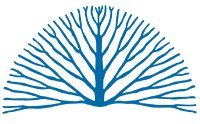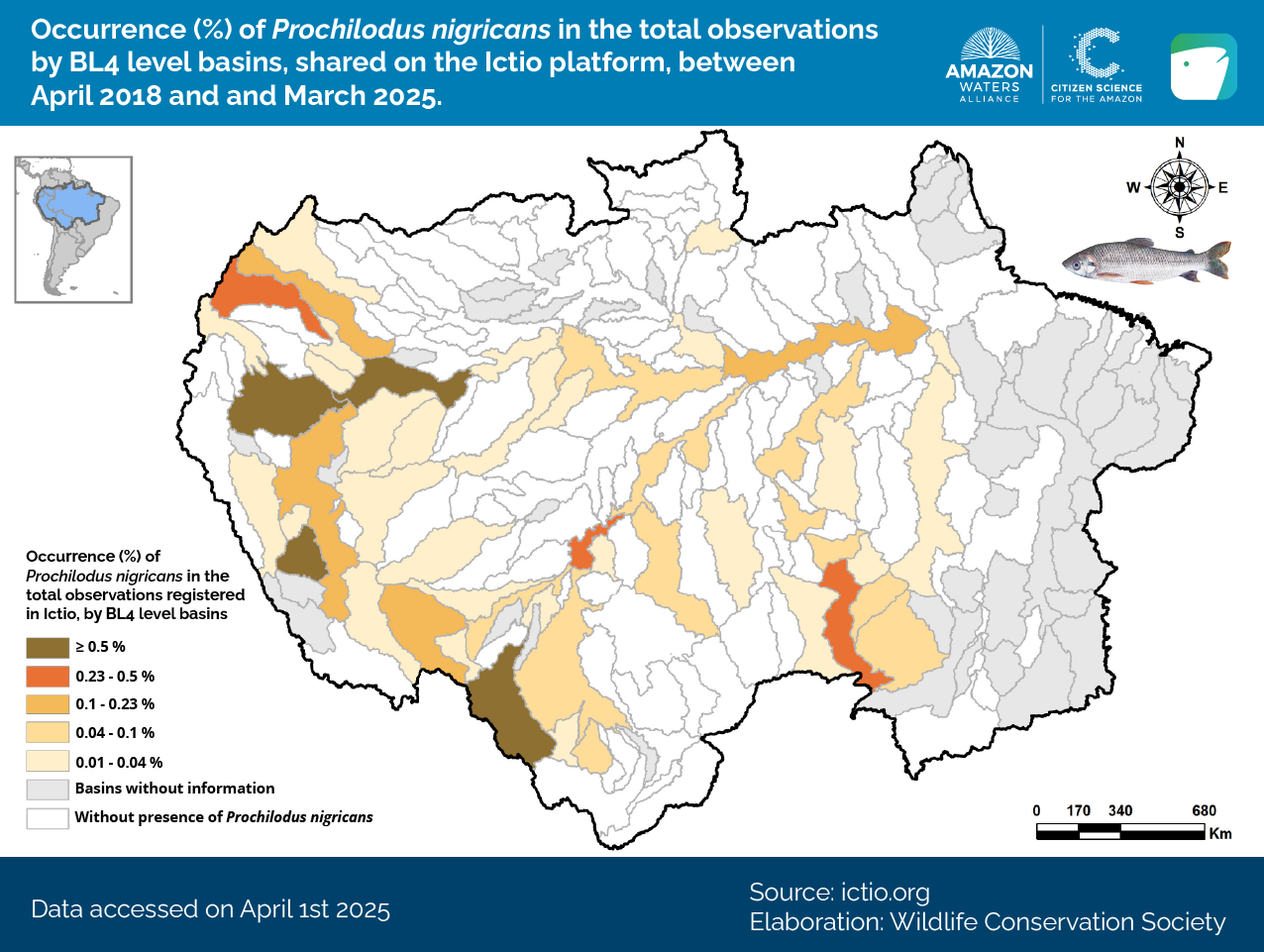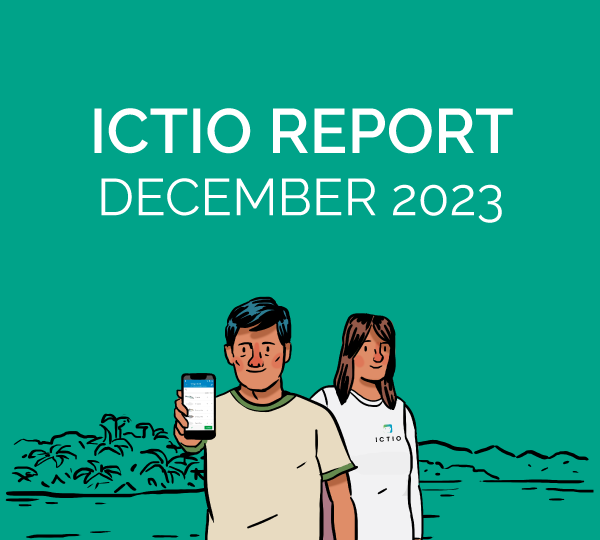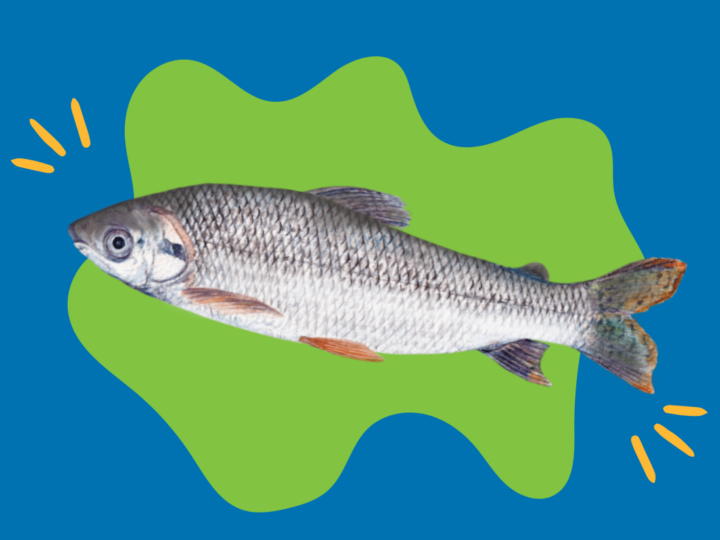
Ictio recorded 130,556 valid observations from 121 species/groups of fish, for a a total of 83,572 valid fishing events (Figure 1).

Figure 1 – As of March 31, 2025, Ictio has gathered a total of 130,556 fish observations in 83,572 lists (fishing events). This information was recorded in 152 (77%) of the 198 level 4 sub-basins of the Amazon. There are 732 registered citizen scientists and organizations that have shared information in 152 level 4 sub-basins (BL4) of the Amazon (i.e., 77%) (learn more about the basin classification used by Ictio in Venticinque et al., 2016 – ‘New Geographic Information Systems (GIS) on rivers and basins for the conservation of aquatic ecosystems in the Amazon’). The sub-basin ‘Madeira – upstream Jamari’ continues to lead in the number of 21, 291 observations registered, followed by the sub-basin ‘São Manoel – above Peixoto de Azevedo’ (17,398 observations) and the sub-basin ‘Amazonas/Solimões – between Juruá and Negro’ (14,739 observations). In this quarter, the Comandante Fontoura sub-basin, in the Xingu River, contributed its first reports to Ictio. The sub-basins Abacaxis (upstream Canumã), Brasil, and Madre de Dios (upstream Tampobata), Peru, recorded increases in observations (Figure 2).

Figure 2 – Registers increase in Ictio by BL4 sub-basin from January to March 2025.
Reported species
Of the 121 species/groups of species registered in Ictio, ‘Other fish’ remains the most observed group. The thick-scaled jaraqui (Semaprochilodus insignis) is the most recorded species (8,574 observations), followed by the curimatã (Prochilodus nigricans) with 7,649 observations and the tambaqui (Colossoma macropomum) with 7,499 observations (Figure 3).

Figure 3 – Species/groups of species with the most registers in Ictio as of March 31, 2025.
Strengthening fisheries governance in the Amazon
In February, we concluded the first cycle of the Dialogues of Knowledge in Brasília, Brazil (Figure 4). The goal of the Dialogues was to inspire pathways for good fisheries governance practices in the Amazon Basin, and in this first cycle, we focused on mapping groups of fishermen and fisherwomen working on participatory monitoring and management of fish, as well as common discussion topics.

Figure 4 – Fisher leaders gathered in Brasília for the fifth Dialogue of Knowledge.
In five meetings, we identified 27 groups of fishermen and fisherwomen who manage their fishing resources in a participatory manner in Brazil, Bolivia, Ecuador, and Peru; and discussed relevant topics at the basin scale, such as climate change, support for monitoring and fisheries management, fair trade, and access to public policies. These experiences will be included in an online atlas to be launched.
GLOSSARY
Checklists: Lists of fish caught in a fishing event.
BL4 Basins: Basin level 4 is the scale that delineates all tributary sub-basins between 10,000 km² and 100,000 km².
Observations: Records of species/groups of fish species caught in the Amazon Basin.
Users: Amazonian citizens using the ICTIO application or platform, consisting mainly of local and indigenous peoples, individual fishers, management groups, associations of fishermen, and scientists.

This note is made possible thanks to the support of the Gordon and Betty Moore Foundation. The content is the responsibility of the Wildlife Conservation Society and does not necessarily reflect the views of the Moore Foundation.







